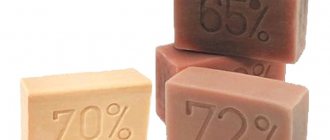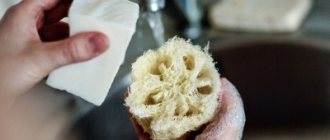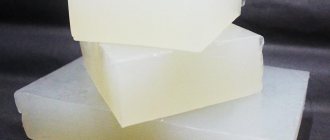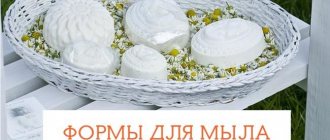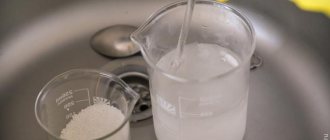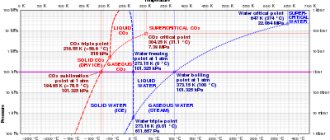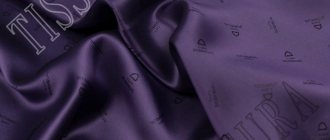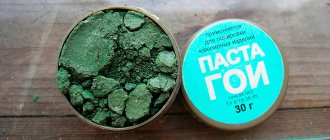During the Soviet Union, every housewife always had a couple of bars of laundry soap in her bathroom. This product performed several functions at once: it was used to wash, wash, wash hair and even treat some diseases.
Nowadays, this detergent has not lost its popularity. What are its magical properties associated with? What components are included in laundry soap that modern housewives prefer it over modern fashionable powders?
You will find the answer to these questions in our article.
Production Features
To understand the secret to the long-term success of this simple detergent, you need to understand how laundry soap is made.
The soap making process involves boiling the detergent and forming bars for sale.
Soap is prepared using two methods:
- Direct production;
- Indirect method.
The direct method of soap production consists of processing all the original ingredients into a special soap glue. During cooking, soda is added to it. The glue is left to harden, and then cut into pieces and sent to store shelves. Such brown bars contain 40-70% fatty acids. The direct method allows you to obtain soap with high cleaning qualities and low fat content.
Video: how soap is made:
During indirect production, laundry soap is prepared by treating the resulting soap glue with a salt solution, the so-called salting out. As a result, 2 components are obtained: a soap core and a soap piece (lye). Soap made this way has slightly more fatty acids than bars made with glue.
In order for the detergent to acquire high-quality properties, it must be re-treated with a saline solution.
With your own hands
Liquid laundry soap is available on store shelves, but if you wish, you can make it yourself. It is more convenient for washing dishes. Excellent against mold in the bathroom, has an antifungal effect, less time spent on soaping. As ingredients, use a whole 72% bar or soap, a tablespoon of honey and glycerin (you can add liquid vitamin E instead), a few drops of essential oil to your taste (it will give a pleasant aroma). Usually they take citrus (lemon or orange), tea tree, eucalyptus or rose oil. For convenience, the soap must first be softened by placing it in a warm place. Then grate on a fine grater, mix with a glass of boiling water and beat with a blender until smooth. Let stand for 15 minutes, pour in the remaining ingredients, and beat again. It is then recommended to pour the liquid substance into a suitable container with a dispenser or a plastic bottle and store at room temperature.
If you boil soap shavings in a half-liter saucepan, stir the resulting liquid until a homogeneous mass is obtained, cool and pour in a tablespoon of vodka and 50 ml of glycerin, the result will be a concentrated gel.
Secret ingredients
So what are these magic bars made of, if in addition to excellent cleaning properties they even have the ability to disinfect?
Experts have proven that the components that make up natural soap do not cause allergies and are excellent antiseptics due to their antibacterial properties. The quantity and combination of constituent ingredients affect the characteristics of smell, color and determine shelf life.
Video: composition of the new laundry soap:
We will give a detailed description of each component and talk about their influence on the special properties of soap
Animal fats
In modern production, animal fats are the basic component of laundry soap. Most often, beef or pork fat is used. Sometimes the fatty layers of certain types of marine fish are used for these purposes.
Manufacturers often use a fat substitute. This will not affect the quality of the soap in any way. In addition, FFAs are pre-cleaned, and therefore this cleaning product does not have an unpleasant odor.
Sodium
The percentage of sodium in soap is small, but it is thanks to this component, which is a caustic alkali, that the oldest stains are washed off.
Fresh water
This component is an integral part of the production of any detergent, laundry soap, including. It is present at all stages of its preparation.
Kaolin
The composition of laundry soap necessarily contains white porcelain clay, or, as it is also called, kaolin. Despite its low percentage, kaolin performs an important function: it softens the effect of alkalis on human skin.
Note!
If this component is absent from the soap, you cannot wash your hair and body with it!
Laundry soap always contains 72% kaolin.
Fatty acid
The most commonly used are palmitic acid and lauric acid.
Thanks to palmitic acid, soap bars are hard and have excellent foaming properties. And lauric acid allows laundry soap to demonstrate excellent foaming properties and remove stains even in cold water.
The soap that contains more unsaturated acids looks like a pasty mass and washes clothes perfectly even in ice water.
pH factor of human skin
Human skin has a much lower pH than laundry soap. Human skin is the largest human organ and has an acidic environment. An acidic environment is a natural defense against pathogenic bacteria and microorganisms.
The protective skin layer consists of sweat, low molecular weight organic acids, sebum (sebum). Highly alkaline laundry soap washes away the acidic environment of our skin.
With constant use of laundry soap, the skin loses its natural protection, becomes dehydrated, and becomes dry. The benefits of laundry soap for the skin are very doubtful; everything has been proven here a long time ago.
You should also not forget about the completely unpleasant smell that any laundry soap emits. This smell is difficult to get rid of; once you wash your hands with it, the smell of the laundry will haunt you for a very long time.
For some reason, laundry soap has become almost a cult, saying that it can get rid of acne and other skin problems. If acne appears from pores clogged with sebum, it is quite possible that laundry soap can help solve the problem.
But if the cause of acne is something else, for example, a person has hormonal problems, then no soap will help.
There is an opinion that laundry soap is an excellent product for intimate hygiene. This is a rather controversial issue. First of all, the soap has an unpleasant smell. And secondly, why reinvent the wheel if so many special products have already been invented for intimate hygiene?!
Laundry soap with its high pH factor is not suitable for constant skin care, but even isolated cases of use will not cause any harm.
Other Supplements
Rosin is found in low grade soap. This ingredient promotes good foaming properties and dissolution at low temperatures. Moreover, thanks to this component, the shelf life of the detergent increases several times, preventing it from going rancid.
Salomas, which is used in the production of margarine or spreads, can also be added to the composition of brown bars.
Soap stocks are formed when fats and oils are purified with special alkali solutions. If the soap stocks are of high quality, then thanks to them the bar of soap becomes hard. And if they have not undergone an insufficient degree of purification, the soap turns out to be a very dark color with a characteristic and very unpleasant odor.
Inorganic components
Inorganic ingredients such as soda ash or caustic soda are used to saponify fats.
Sodium silicate helps remove stickiness from soap after adding rosin.
Decreased immunity
Laundry soap has high antibacterial properties. That is why in the last century it was actively used to wash pets and remove fleas from their fur. For people, regular use of laundry and any other antibacterial soap is dangerous. The epidermis loses its natural protective barrier that protects it from bacteria, overall immunity decreases and the body loses its natural ability to resist harmful microorganisms. This can later lead to skin outbreaks and other infections.
Types of laundry soap
Not all buyers know what is included in the seemingly identical brown bars. And this composition differs in the number of basic components.
The fact is that since 1995, laundry soap has been produced according to GOST, which is still in effect today, in three varieties. The difference between them is the amount of fatty acids and alkali.
- 1st category. The acid content reaches 72%;
- 2nd category. Contains up to 69% of the base component;
- Category 3. Contains only 64% acids.
The first category of laundry soap is considered the highest quality, because such a detergent contains the maximum amount of fatty acids. At the same time, it should not have any organic smell.
Chemical burns
The main purpose of laundry soap is to remove grease deposits from any surfaces and stubborn stains from fabrics. It is this feature that, when repeatedly used as toilet soap, destroys the natural layer of the epidermis on the hands. As a result, the skin becomes dry, inflamed, begins to peel and loses elasticity. Moreover, to increase the effectiveness of laundry soap as a stain remover, many manufacturers increase the concentration of sodium hydroxide in it. Such a cleaning product, when used in the shower, can cause real chemical burns to the mucous membranes of the nose, throat and eyes. In some cases, such a reaction on the skin can develop into dermatitis.
Types and scope of application
A modern manufacturer presents laundry soap of different consistencies. It can be found in the form of bars, liquid and even powder.
I would like to pay special attention to liquid laundry soap. The low price and ease of use have allowed this product to become very popular among housewives.
However, contrary to the manufacturers’ statements about the identity of its composition with solid species, this is not entirely true.
Note!
The specifics of production and the components of real laundry soap do not allow this product to be produced in liquid form!
Pay attention to the composition of such a detergent, and you will be convinced that apart from the name with a solid analogue, they have nothing.
The basic components of liquid laundry soap are various surfactants, usually toxic. Indeed, it does an excellent job of removing various kinds of dirt on fabrics and grease on dishes, but it is far from an environmentally friendly product. Using it, you are not immune from the occurrence of an allergic reaction, as after using any other synthetic detergent. And, of course, you shouldn’t wash children’s clothes with such “laundry” soap.
Product types
There are several types of soap:
- Liquid laundry soap. There are no differences from lump ones, except for the shape. They sell it in bottles similar to dishwashing liquid. The color is the same as the product we are used to. It is good to use when doing laundry and washing dishes. There is a difference in composition and smell (the liquid form contains several chemical elements).
- Children's. This type of soap is ideal for washing baby clothes. It has a soft structure and a not too pronounced odor so as not to cause discomfort in children.
- White. This color of soap is obtained through the use of white. Do not use for washing dishes. Manufacturers warn against getting the product into the body. The white color can be the result of using sodium hydroxide in a certain amount (the more substance, the lighter the shade of the soap).
- Powder. This product does not contain any additives. Standard soap is ground into fine granules. A similar powder can be poured into a washing machine.
Methods of application
Natural laundry soap, thanks to its special qualities, can be used in various areas of life.
- Convenient to use as it does not take up much space. You can take it with you on hikes, to the dacha, picnics;
- This is the most economical way to keep your kitchen clean;
- With its help you can disinfect all personal hygiene products;
- Removes the most difficult stains while maintaining the quality of the fabric;
- An excellent detergent for washing children's clothes, as it does not cause allergies;
- It has antiviral properties and, according to some reviews, can even cure a runny nose and some diseases of the female genital area;
- It has a pronounced antimicrobial property, so it is suitable for washing the body and problematic facial skin.
Based on the above, we can conclude that laundry soap is a natural product that can be used in almost all areas of life. Choose the right soap, and then you will see the truly amazing properties of these simple brown bars.
Video: using soap:
Names of popular brands
In modern markets you can find soap from various manufacturers. Here is a list of popular ones that produce their products in accordance with the GOST recipe with a description:
- DURU. One package includes 2 or 4 bars. The cost is identical to standard soap. The color is different - it is white. The surface of the bar is decorated with patterns.
- "Stork". The color of the soap is brown, the edges are rough, the smell is identical. The manufacturer has created a children's version - “Stork”. Aist is distinguished by a lighter color. Used when washing children's clothes.
- "Freedom". Natural soap with rounded corners. Removes stains that washing powder cannot remove.
- "Cinderella". Available in powder form in large granules. Yellow color. The aroma is unique. It is the only analogue of household goods. soap, which comes in powder form.
- "Eared nanny." Presented with children's white soap. The texture is delicate.
- "Meridian". It has a specific aroma, similar to the smell of a fire, soft texture, thick foam.
- "Economy". Sold in transparent packaging, color like traditional soap.
- Haus Frau. Available in transparent bottles, the smell is standard, contains vitamin E.
- "Sun". The color of the soap is yellow. It copes with the strongest fat, is economical, and has a pleasant lemon scent.
- "Antipyatin." Hypoallergenic product with lemon aroma, used for washing.
- Sarma. White bar, foams well. "Sarma" has a neutral smell.
- "Spring". The composition is similar to traditional household products. soap. The smell is similar.
Laundry soap is considered a useful assistant. According to reviews, they can clean almost everything. Do not forget about the medicinal properties of this product.
What is natural soap made from?
Today, manufacturers offer natural soap in a wide range, but its composition does not always correspond to the description. A truly natural product is made from vegetable oil (coconut, palm, olive), which cares for the skin, making it soft and velvety. It can contain up to 90-100% oil, making it latherable even in salt water. You can make this soap yourself using our recipes as a starting point.
In order not to be disappointed in such an interesting hobby, you should use the recommendations of experienced people.
Handmade soap is a great gift for yourself or loved ones. Try making it yourself to get a healthy and natural cosmetic product at home.
Which soap is better?
You need to figure out how laundry soap with different percentages of fatty acids differs in its qualities.
Soap 72.5% has the best cleansing properties. But it also has a high pH (11-12), so it dries out the skin greatly. If you frequently use the product without wearing protective gloves, the skin on your hands will quickly become dry and cracks may appear. Also, dark laundry soap has a more pronounced smell.
Soap 69% and 64% are slightly less effective and less aggressive. If you need to remove old, greasy stains, remove stubborn dirt, or whiten laundry, you should choose dark soap 72.5%.
64% soap can be used for cosmetic purposes. It is softer and does not dry out the skin as much. You can use it to wash your hair to get rid of dandruff, wash your face, and treat small wounds and scratches. Laundry soap foam in combination with baking soda is used for home peeling procedures.
Attention! Do not use laundry soap to bathe children; their skin is too delicate. Products with a neutral pH value are suitable for children.
Much depends on the storage conditions of the product. Soap should be stored in a dry, ventilated area at a temperature of at least -5°C. Air humidity should not exceed 75%.
The bar that is already in use should be placed in a soap dish with a tray to allow the water to drain. This will keep it dry and firm and not get soggy. If the air in the room is too dry, the soap, on the contrary, may crack.
